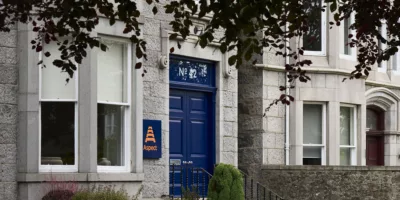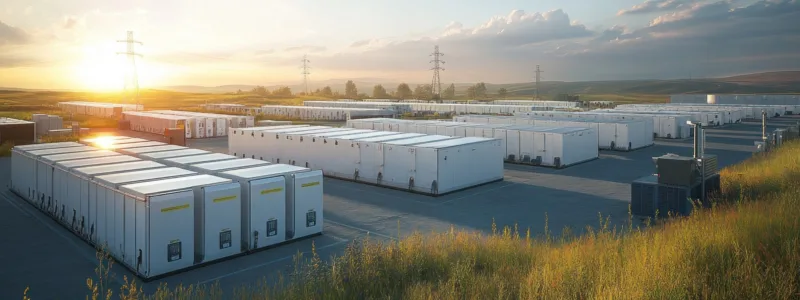5 minute read
It’s not subtle, but then neither is the problem. In boardrooms across the energy sector, executives are talking at their stakeholders more than with them. Transmission is prioritised over reception. In an environment defined by rapid decarbonisation, geopolitical disruption, and a fragile public licence to operate that approach is not just a missed opportunity – it’s a liability.
Despite the urgency to deliver on clean energy targets, on major capital projects, on ESG reporting leaders are rushing past one of their most potent assets: the ability to generate insight through meaningful, early engagement.
This is not about checkbox consultation exercises. Instead, we’re talking about listening that challenges assumptions, informs decisions, and builds lasting support.
“We have two ears and one mouth so that we can listen twice as much as we speak.” – Epictetus
Listening isn't weakness. It's leverage
In the traditional model of energy leadership, listening was too often equated with hesitancy – a soft skill that slowed momentum. But the reality is the opposite: the organisations making the most tangible progress are those that treat insight generation as core strategy.
This means:
- Asking better questions.
- Identifying the right audiences early.
- Reading signals beneath the noise.
- And – crucially – acting on what they hear.
To illustrate, consider a hypothetical scenario: an energy company preparing to pivot towards low-carbon infrastructure faces growing community concern. Instead of pushing ahead with predetermined messaging, it builds a structured listening process into the planning phase –gathering insight through stakeholder interviews, sentiment mapping, and local engagement.
This early investment surfaces not just pockets of resistance, but surprising advocates and clearer expectations. The company adapts its strategy, updates its messaging, and earns internal and external support that avoids later disruption.
It’s not an actual case study, but it’s representative of the kinds of outcomes we frequently see when companies embed strategic listening into their project DNA.
Compelling evidence
The business value of strategic listening is now well supported by data. Companies that implement stakeholder-aware models report up to 20% higher profitability compared to those that don’t prioritise engagement (Infomineo, 2025). Strong stakeholder engagement also correlates with significantly better execution: organisations that invest in early listening see project success rates rise from around 40% to nearly 78% (Hubspot, 2024).
A major study by McKinsey found that companies that embrace stakeholder engagement from the outset are four times more likely to achieve successful organisational change during transformation programmes.
Even more striking, companies that actively engage stakeholders in the early stages of strategic planning are 30% more likely to succeed in launching new products and innovations (ZTS, 2024). In fast-evolving sectors like energy and infrastructure, that advantage can make the difference between or irrelevance.
Importantly, these effects aren’t just internal. Listening externally builds trust. Research shows that stakeholder listening increases transparency, lowers conflict, and boosts loyalty – particularly when feedback is seen to directly influence business strategy.
Stakeholder listening: the windscreen, not the rearview mirror
Crucially, listening exercises are not about optics. When done well, they are decision-support tools. Think of a stakeholder listening reports as a radar system for your strategic communications. They allow leadership to look forward through the windscreen and see what’s brewing around you – the crosswinds, the turbulence, the tailwinds you didn’t know were there.
They provide:
- Thematic analysis of market sentiment and stakeholder concerns.
- Signals of resistance that may derail execution.
- Opportunities for alignment across commercial, regulatory, and community priorities.
- Narrative insight: what story your stakeholders are already telling with or without you.
In energy and decarbonisation settings, where reputational capital is often as vital as financial capital, these reports can be invaluable in revealing the mood music before it becomes noise or backlash.
Why energy leaders must make the switch
Energy companies, particularly those pivoting toward decarbonisation, face a paradox: their reputational expectations are rising just as public trust in traditional energy narratives is falling.
In this context, treating communication as a downstream activity – something that happens after decisions are made – is a dangerous game. It can lead to:
- Resistance from key stakeholders who feel blindsided.
- Reputational damage from tone-deaf messaging.
- Execution delays due to unanticipated objections.
- And worst of all, strategies that fail in-market because they don’t resonate with the real-world context.
Strategic listening turns this around.
It allows leadership to test assumptions, uncover blind spots, identify shared goals, and build resilience into the plan before the first public statement is made. It may turn out that what you thought was a messaging problem was actually a sequencing problem.
Three questions to ask your team this week
- Is your communication strategy aligned with your revenue and delivery goals or just reactive?
- Are you listening – really listening – to what stakeholders are saying, feeling and fearing?
- Are you applying insight – not just information – to drive strategic decisions?
If the answer to any of those is ‘no’, now is the time to fix it.
Beyond consultation: shaping the strategy itself
Too often, communication teams are brought in after the fact – asked to package decisions, not shape them.
But when strategic communication is embedded early and treated as an equal partner, outcomes improve significantly. Projects move faster, encounter fewer surprises and generate greater internal and external support. What’s more, the organisation creates narratives that reflect reality, not just its aspirations.
This is especially relevant for decarbonisation projects, where competing pressures –economic, political, environmental – require careful alignment of intent and perception
Final word: real leadership starts with listening
In an era defined by uncertainty, complexity, and accelerated change, the ability to listen strategically is a superpower. Not because it makes you look empathetic but because it makes you more effective.
If you’re planning major change, ask yourself:
- Have you pressure-tested your assumptions with those who’ll be impacted?
- Are you creating space for honest, external perspectives?
- And are you willing to let what you hear shape what you do?
Because in energy and decarbonisation, success won’t come from louder messaging. It will come from smarter listening.





